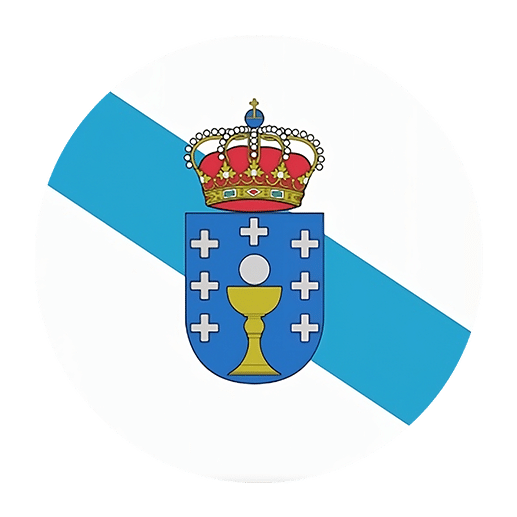Learning a new language can be an exciting journey, and understanding the intricacies of pronouns is a crucial step in achieving fluency. Galician, a Romance language spoken in the northwest region of Spain, shares many similarities with other Romance languages like Portuguese and Spanish. However, it has its unique characteristics that make it special. In this article, we will delve into the world of Galician pronouns, exploring subject pronouns, object pronouns, and reflexive pronouns. By the end of this article, you should have a solid foundation in using these pronouns effectively in Galician.
Subject Pronouns
Subject pronouns are used to indicate who is performing the action of the verb. In Galician, subject pronouns are similar to those in Spanish and Portuguese, but they have their own distinct forms.
Here is a list of Galician subject pronouns:
– Eu (I)
– Ti (You – singular, informal)
– El / Ela (He / She)
– Nós (We)
– Vós (You – plural, informal)
– Eles / Elas (They – masculine / feminine)
Usage:
1. Eu (I):
“Eu” is used when the speaker is referring to themselves. For instance:
– Eu son estudante. (I am a student.)
2. Ti (You – singular, informal):
“Ti” is used when addressing someone informally. For example:
– Ti es o meu amigo. (You are my friend.)
3. El / Ela (He / She):
“El” is used for males, and “Ela” is used for females. Examples include:
– El traballa nunha oficina. (He works in an office.)
– Ela vive en Santiago. (She lives in Santiago.)
4. Nós (We):
“Nós” is used when the speaker is including themselves and others. For example:
– Nós imos ao cinema. (We are going to the cinema.)
5. Vós (You – plural, informal):
“Vós” is used when addressing a group of people informally. For example:
– Vós sodes divertidos. (You all are fun.)
6. Eles / Elas (They – masculine / feminine):
“Eles” is used for groups of males or mixed gender groups, while “Elas” is used for groups of females. Examples include:
– Eles son profesores. (They are teachers – male or mixed group.)
– Elas cantan ben. (They sing well – female group.)
Object Pronouns
Object pronouns in Galician are used to indicate who is receiving the action of the verb. They can be direct or indirect, and their placement can vary depending on the sentence structure.
Direct Object Pronouns:
Here is a list of Galician direct object pronouns:
– Me (Me)
– Te (You – singular, informal)
– O / A (Him / Her)
– Nos (Us)
– Vos (You – plural, informal)
– Os / As (Them – masculine / feminine)
Usage:
1. Me (Me):
“Me” is used when the action of the verb is directed at the speaker. For example:
– El víume onte. (He saw me yesterday.)
2. Te (You – singular, informal):
“Te” is used when the action of the verb is directed at the person being spoken to. For example:
– Eu vinte onte. (I saw you yesterday.)
3. O / A (Him / Her):
“O” is used for males, and “A” is used for females. Examples include:
– Eu vin o meu amigo. (I saw my friend – male.)
– Eu vin a miña amiga. (I saw my friend – female.)
4. Nos (Us):
“Nos” is used when the action of the verb is directed at the speaker and others. For example:
– Eles víronos onte. (They saw us yesterday.)
5. Vos (You – plural, informal):
“Vos” is used when the action of the verb is directed at a group of people being spoken to. For example:
– Eu vinvos onte. (I saw you all yesterday.)
6. Os / As (Them – masculine / feminine):
“Os” is used for groups of males or mixed gender groups, while “As” is used for groups of females. Examples include:
– Eu vin os meus amigos. (I saw my friends – male or mixed group.)
– Eu vin as miñas amigas. (I saw my friends – female group.)
Indirect Object Pronouns:
Here is a list of Galician indirect object pronouns:
– Me (To me)
– Che (To you – singular, informal)
– Lle (To him / her)
– Nos (To us)
– Vos (To you – plural, informal)
– Lles (To them)
Usage:
1. Me (To me):
“Me” is used when the action of the verb is directed towards the speaker. For example:
– Ela deume un libro. (She gave me a book.)
2. Che (To you – singular, informal):
“Che” is used when the action of the verb is directed towards the person being spoken to. For example:
– Eu ché dei un libro. (I gave you a book.)
3. Lle (To him / her):
“Lle” is used for both males and females. Examples include:
– Eu lle dei un libro. (I gave him/her a book.)
4. Nos (To us):
“Nos” is used when the action of the verb is directed towards the speaker and others. For example:
– Eles déronnos un libro. (They gave us a book.)
5. Vos (To you – plural, informal):
“Vos” is used when the action of the verb is directed towards a group of people being spoken to. For example:
– Eu vos dei un libro. (I gave you all a book.)
6. Lles (To them):
“Lles” is used for groups of males, females, or mixed gender groups. Examples include:
– Eu lles dei un libro. (I gave them a book.)
Reflexive Pronouns
Reflexive pronouns in Galician indicate that the subject of the verb is also the object, meaning the action of the verb is being performed on the subject itself. Reflexive pronouns are essential for constructing reflexive verbs, which are verbs that indicate actions performed on oneself.
Here is a list of Galician reflexive pronouns:
– Me (Myself)
– Te (Yourself – singular, informal)
– Se (Himself / Herself / Themselves)
– Nos (Ourselves)
– Vos (Yourselves – plural, informal)
– Se (Themselves)
Usage:
1. Me (Myself):
“Me” is used when the speaker is performing an action on themselves. For example:
– Eu me lavo. (I wash myself.)
2. Te (Yourself – singular, informal):
“Te” is used when the person being spoken to is performing an action on themselves. For example:
– Ti te lavas. (You wash yourself.)
3. Se (Himself / Herself / Themselves):
“Se” is used for both males and females, and for groups. Examples include:
– El se lava. (He washes himself.)
– Ela se lava. (She washes herself.)
– Eles se lavan. (They wash themselves – male or mixed group.)
– Elas se lavan. (They wash themselves – female group.)
4. Nos (Ourselves):
“Nos” is used when the speaker and others are performing an action on themselves. For example:
– Nós nos lavamos. (We wash ourselves.)
5. Vos (Yourselves – plural, informal):
“Vos” is used when a group of people being spoken to are performing an action on themselves. For example:
– Vós vos lavades. (You all wash yourselves.)
Special Considerations and Tips
1. Pronoun Placement: In Galician, pronouns can be placed before or after the verb. When the pronoun is placed before the verb, it is known as a proclitic pronoun. When placed after the verb, it is known as an enclitic pronoun. For example:
– Proclitic: Eu te vin. (I saw you.)
– Enclitic: Vinte. (I saw you.)
2. Reflexive Verbs: Many common verbs in Galician are reflexive, such as “levantarse” (to get up) and “vestirse” (to dress oneself). Make sure to use the correct reflexive pronoun when conjugating these verbs.
3. Formal vs. Informal: Galician, like Spanish, distinguishes between formal and informal speech. While “ti” is used for informal singular “you,” “vostede” is used for formal singular “you.” Similarly, “vós” is informal plural “you,” whereas “vostedes” is formal plural “you.”
4. Gender Agreement: Remember that pronouns must agree in gender with the nouns they replace or refer to. For example, use “el” for males and “ela” for females.
5. Practice Makes Perfect: The best way to master pronouns in Galician is through regular practice. Try creating sentences using different pronouns, or engage in conversations with native speakers to reinforce your learning.
Conclusion
Understanding and using pronouns correctly is a fundamental part of learning Galician. Subject pronouns help you identify who is performing the action, while object pronouns indicate who is receiving the action. Reflexive pronouns show that the subject and object are the same. By mastering these pronouns, you will be well on your way to becoming proficient in Galician.
Remember, language learning is a gradual process, and it’s important to be patient with yourself. Practice regularly, immerse yourself in the language, and don’t hesitate to ask for help when needed. Boa sorte! (Good luck!)

